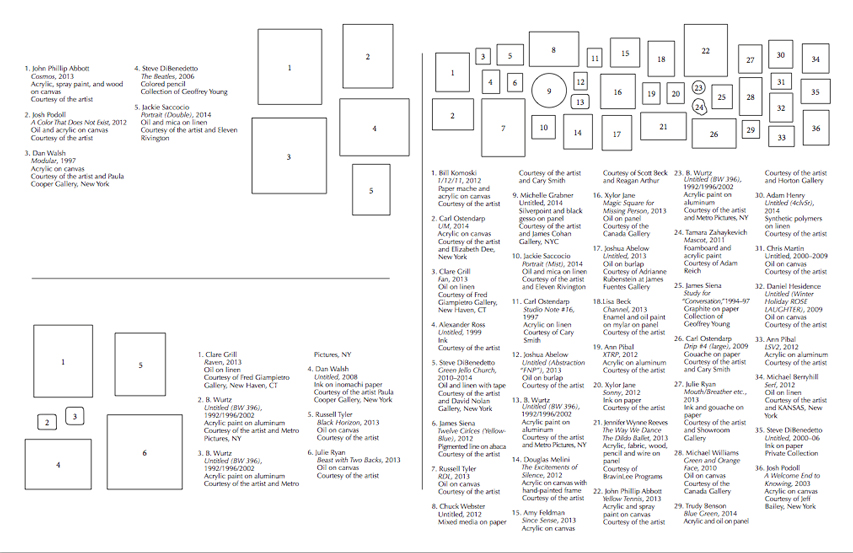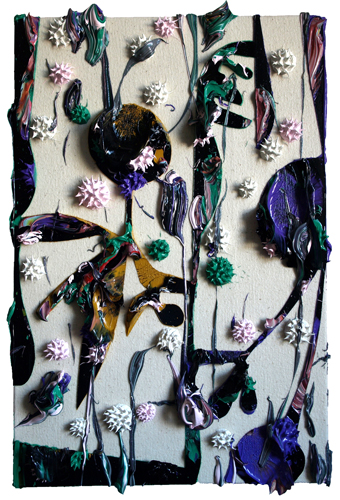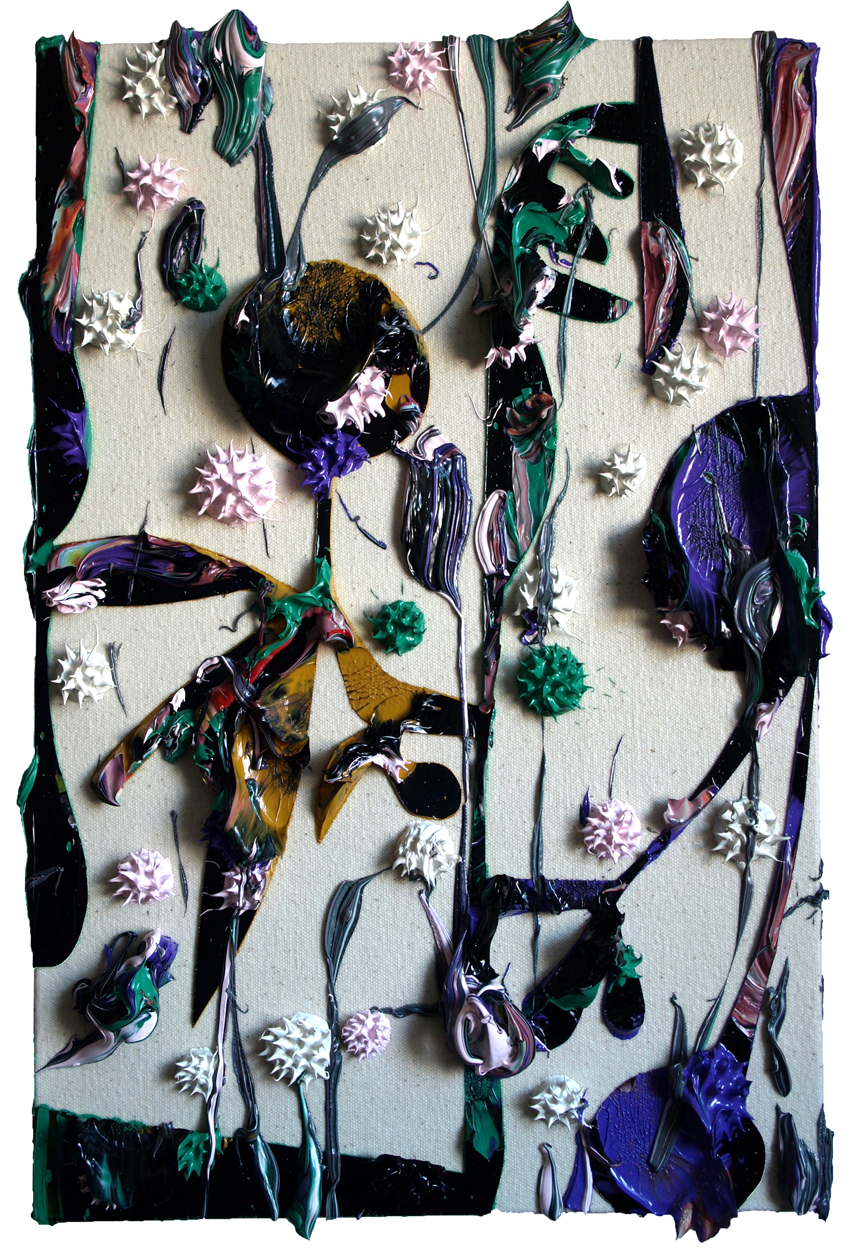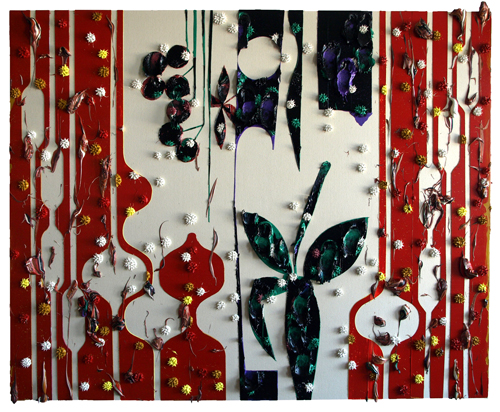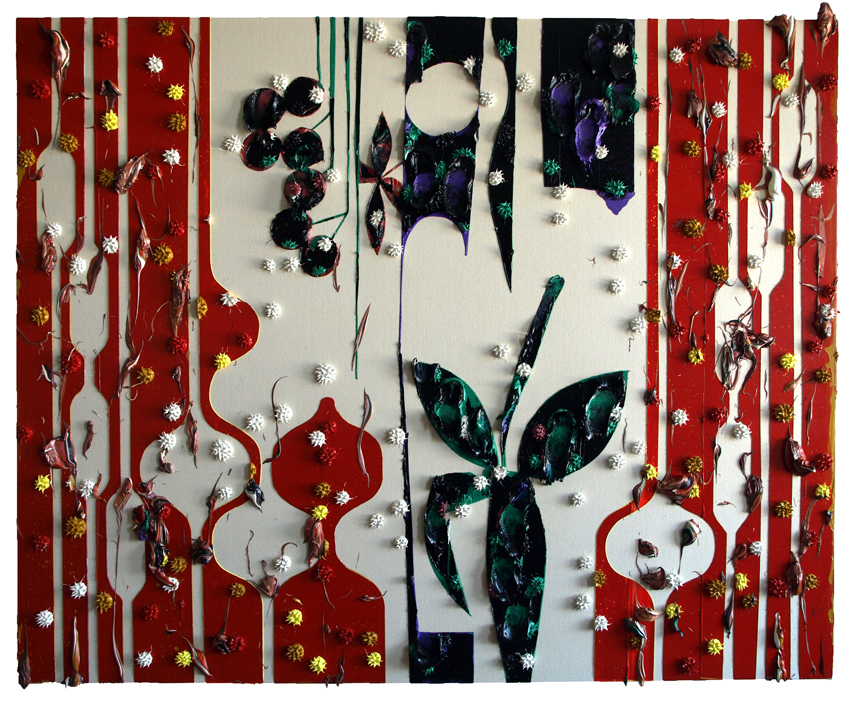July 18, 2014
Jack Davidson Studio Visit
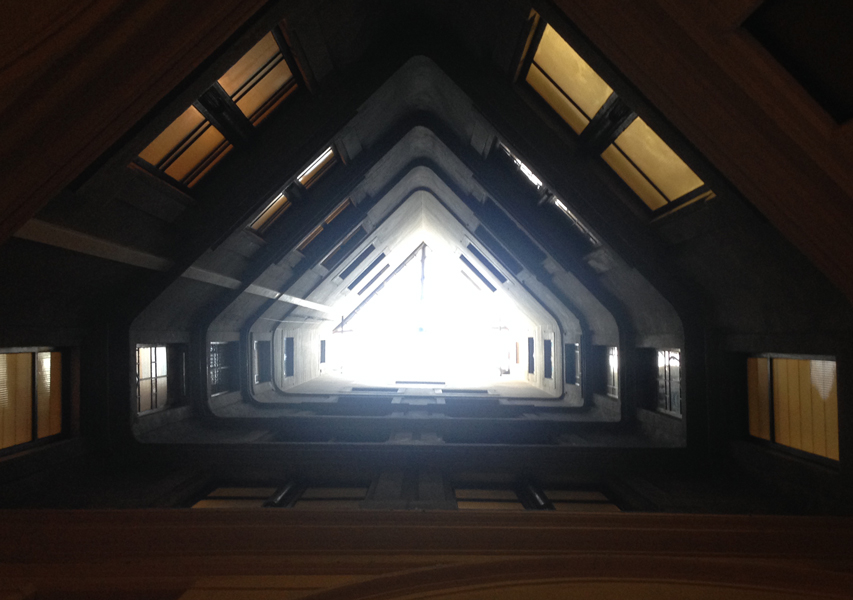
Stephanie and I went to Barcelona to have lunch with Ana and Iñaki (who took the bullet train in from Zaragoza for the occasion, still amazing) and afterwards, we stopped by Jack Davidson's studio to see what he's been painting recently. Jack lives in the bloody heart of Barcelona, the heart of Catalunya, the same heart that Juame de Somebody back in Catalan history dipped his fingers into his wounded chest and scribed the future Catalan flag on a nearby shield(*1), right in the middle of Carrer de Las Ramblas. A Scot, schooled in London, a former resident of NYC, now a dual citizen of the EU and the USA, Jack is one of a few who shares a familiarity(*2) with the conjunction of NYC+BCN.
The image above is of Jack's building's atrium above, a glimpse you can get as you exit and wheel your head skyward. I'm leading with this not to necessarily represent his painting with it... but then there is a theme of something Egyptian and eternal... as also is his abstractions in paint, now that I think about it.
Note *1: No kidding, the story involves a count of Barcelona, also known as "Hairy", and the wounded Juame Charles the Bald.
Note*2: Let's grow this.



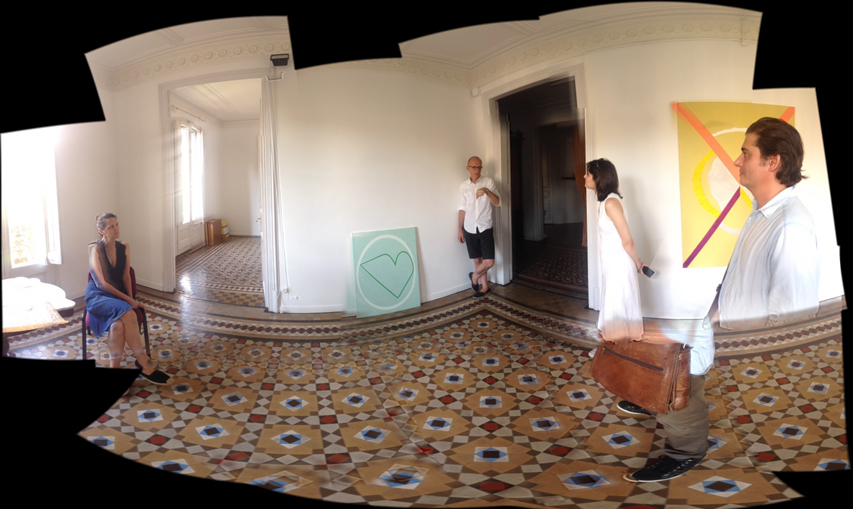
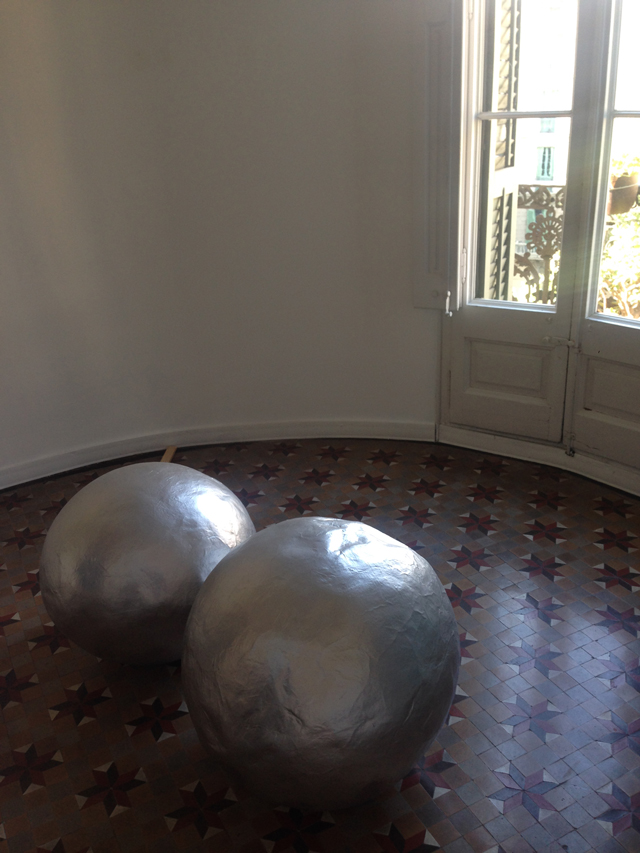
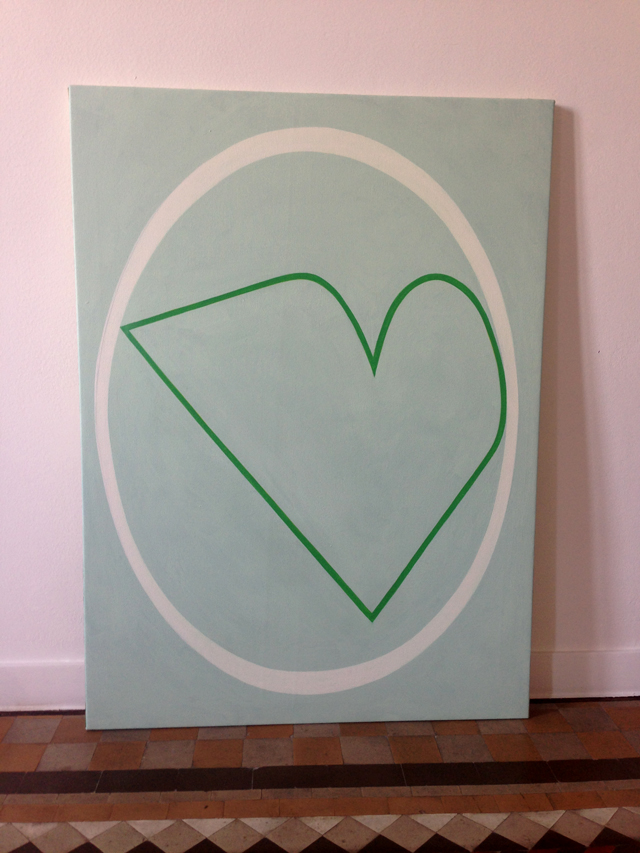
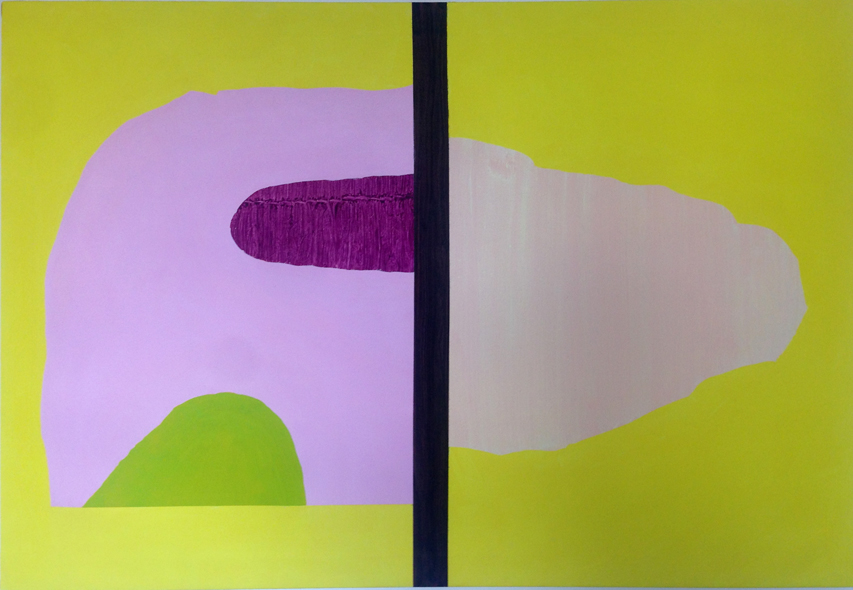
July 15, 2014
Aaron and Sharon in NYC
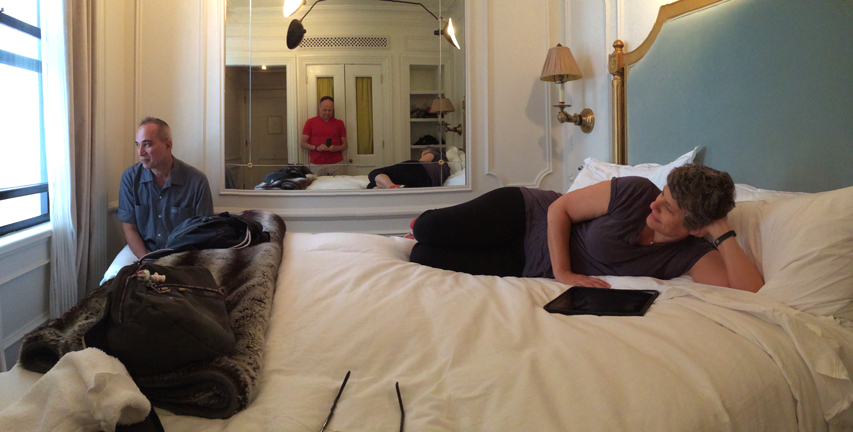
Dear friends since grad school, Aaron Parazette & Sharon Engelstein, now favorite Houston artists, visited us in NYC during the week before we flew to Spain. We made the rounds of the art scene as the weather shifted from the dregs of an offshore hurricane to the near perfect and slid after that into the heat-baked during the final days of their stay.
What did we see? A few notes on the fly: Some of us saw Kara Walker and some of us were caught up with another rendezvous as we sort of waited in a line that wound more than six blocks to get into the former Domino Sugar factory. Jeff Koons at the Whitney: I thought it was overstuffed, it could have used a tighter installation, as if there was too much anxiety in showing all that was special about him; and there was the complicated issue of how to treat his shadow years with Cicciolina, which was tucked in a too discrete corner as if there was some lingering shame to it. Either champion or erase it, one or the other. MoMA's Sigmar Polke and Ligia Clark: there's always something to learn with every visit, Polke seems more modernist every time I see the exhibition and Clark is a study of how hard edge abstraction could spin off into a near cult-like version of another Expanded Field.
July 14, 2014
Codolar
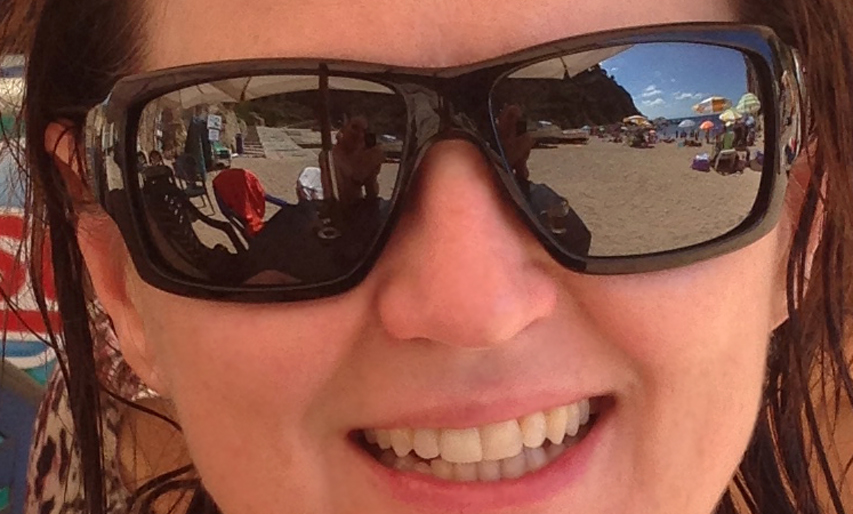
We've arrived in Tossa de Mar via Barcelona, Spain. Our first stop was to Codolar Cove with a plunge in the sea and lunch at the umbrella'd chiringuito that is stationed there. Stephanie will have a shorter visit/vacay and I'll be here until the end of August, painting as much as possible for the arsenal of Miguel Marcos.
bashin' dere brainz
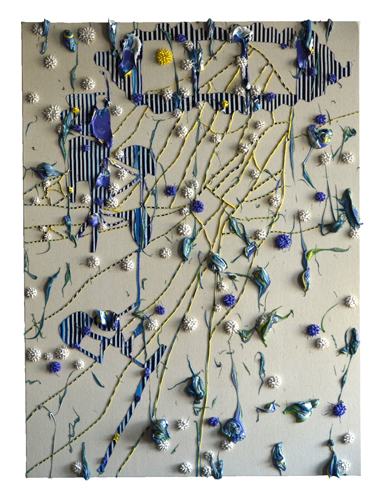
bashin' dere brainz
2014
#461
40"x30"
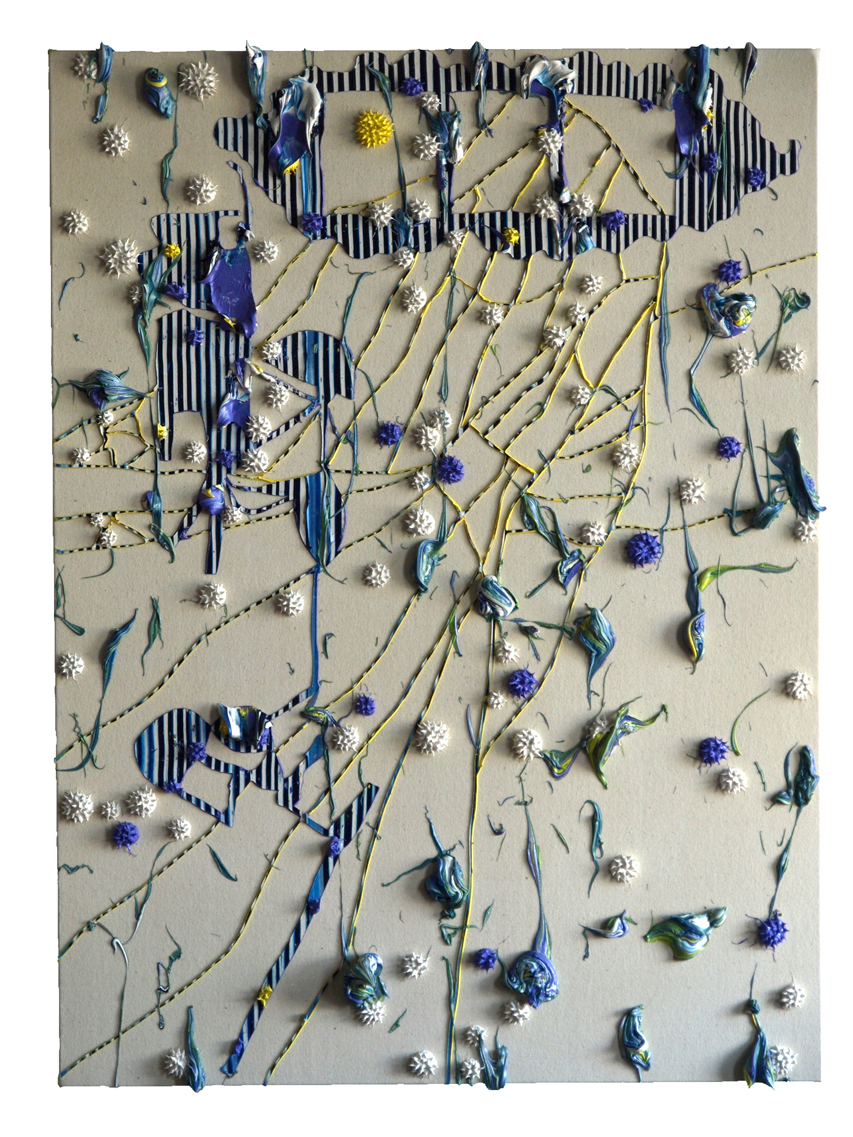
phenomenal wrinkles
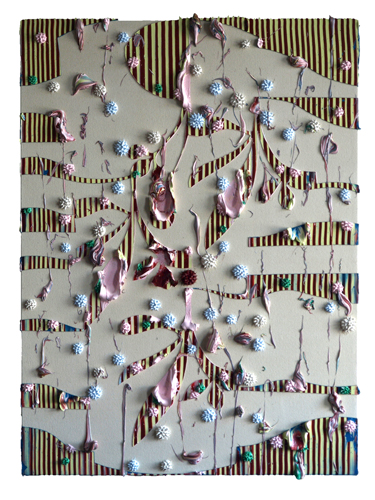
phenomenal wrinkles
2014
#460
40"x30"
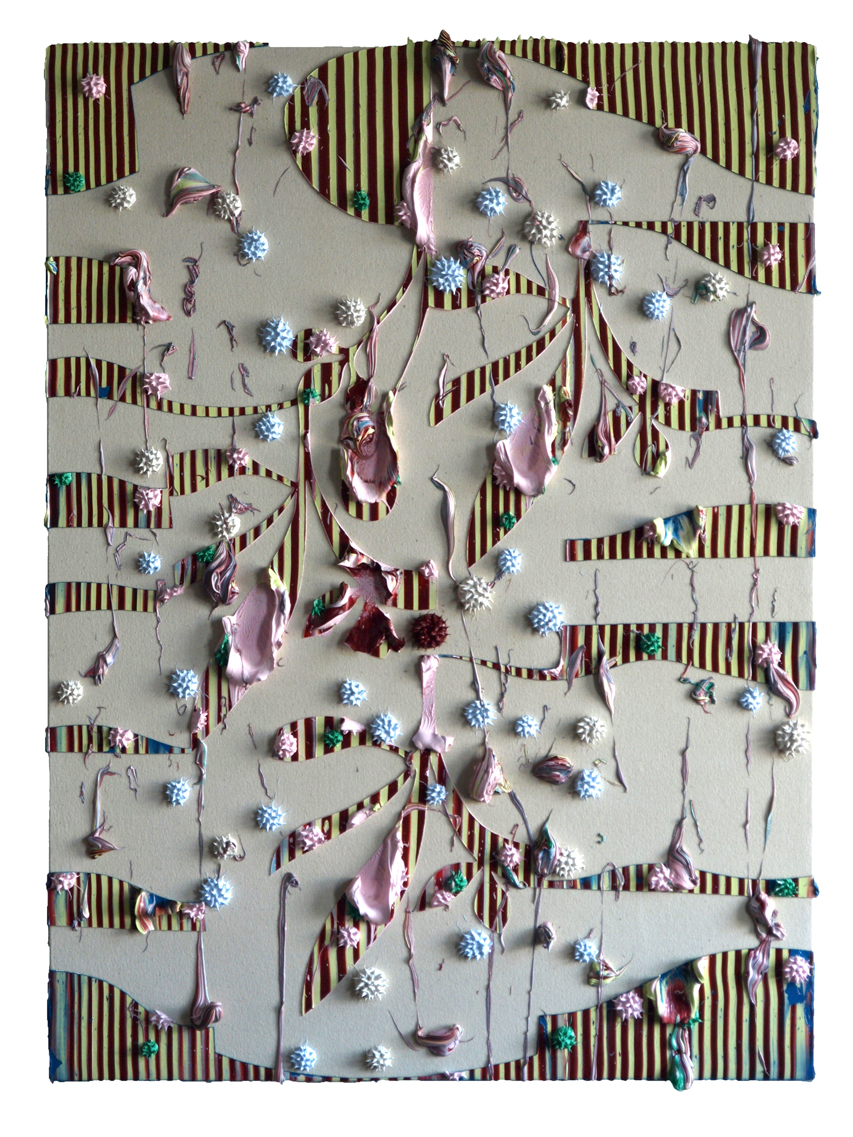
but a blink of an eye
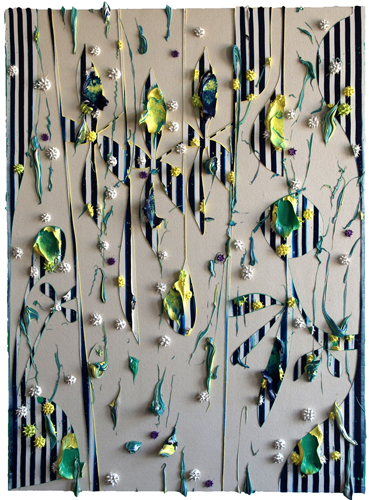
but a blink of an eye
2014
#459
40"x30"
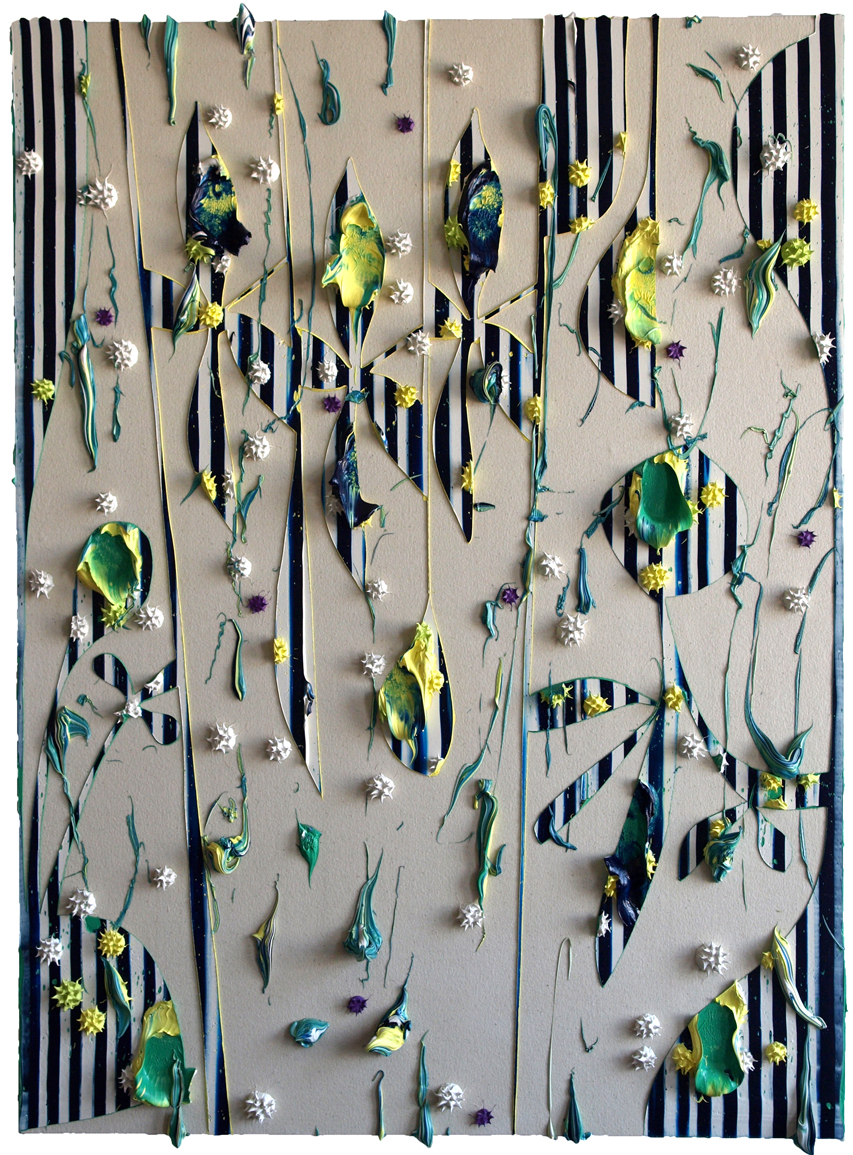
July 4, 2014
the context of aeons
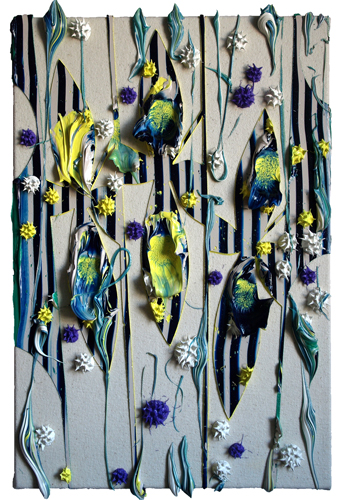
the context of aeons
2014
#458
18"x12"
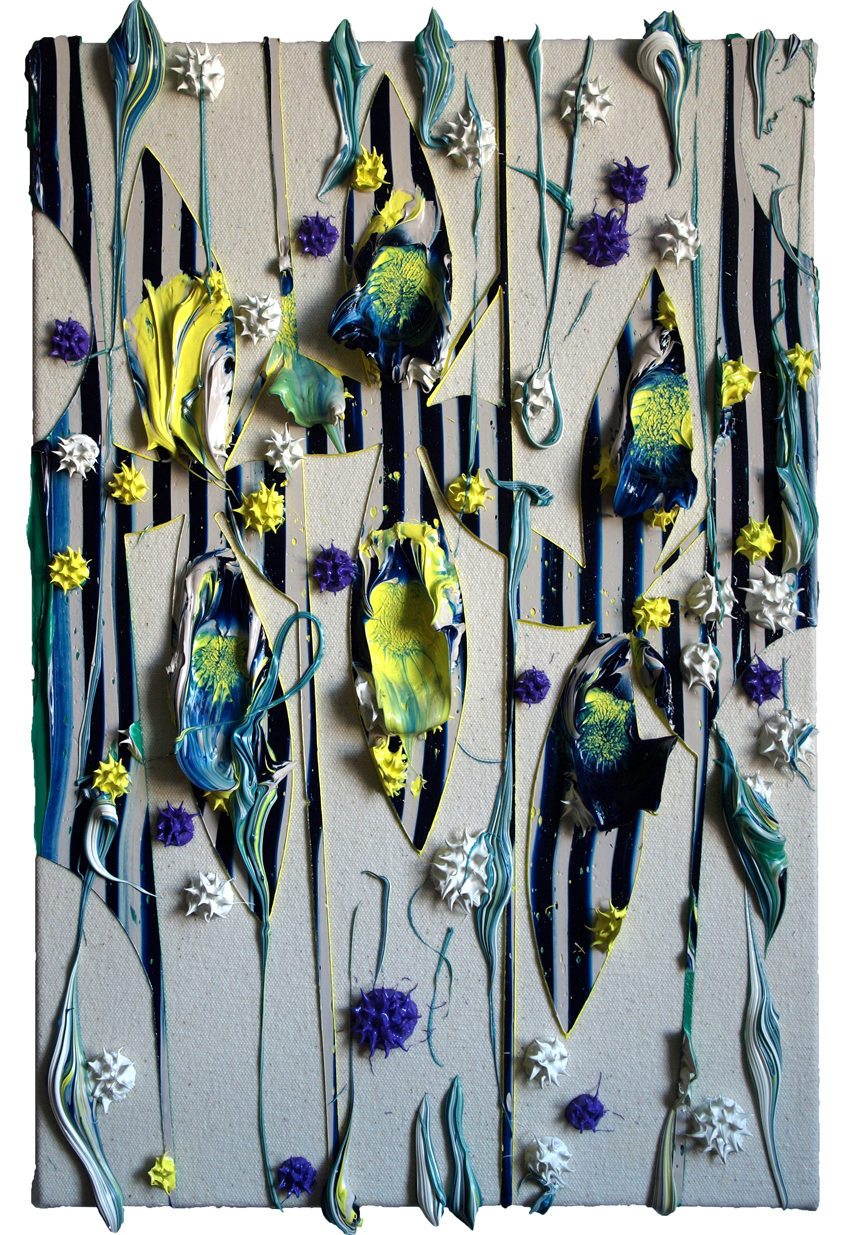
Ear Worm: Brothers Karamazov
The most recent audiobook in my earbuds: Fyodor Dostoyevsky Brothers Karamazov narrated by Constantine Gregory. Father Zosima, Dimitri, Alyosha, Ivan, Smerdyakov... do these characters paint a picture of the Russian soul, as much as Ahab and Ishmael do America's? What more should I delve into to get a fix on Russia? This, after Gulag Archipelago, I think I see Tolstoy on my horizon.
The videos above are simply placeholders in this blogpost for the main characters in the novel. I know nothing about the play they are referencing, although it looks spectacular. The images they feature are fascinating, better than most of the multitude of video clips that I've scanned on YouTube.
Although, I can't resist pasting the 1958 movie starring Lee J. Cobb, Richard Basehart, Yul Brynner and William Shatner.
Yes, William Shatner!
July 2, 2014
This One's Optimistic: Pincushion
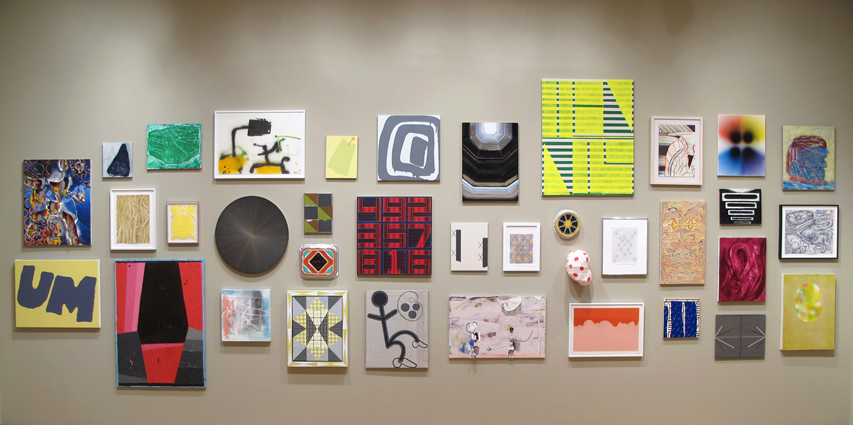
Artist, painter and curator Cary Smith opened his show on Saturday, June 7, titled This One's Optimistic: Pincushion, a group show at the New Britain Museum in Connecticut, delivering remarks introducing the several artists in the exhibition who were present, a short exposition about painting in affirmation and ended with a heartfelt tribute to Jennifer Wynne Reeves, an artist beloved by many who was at that moment in hospice care. (She has since passed away as of this writing.) Fellow painter and favorite friend Joanne Greenbaum invited me to accompany her on the drive to Connecticut and see the show. The pleasure of the ride and conversation was doubled by the opportunity to see a show that is based on affirmation and a commitment to painting. I was full of curiosity about how, or even if my ideas about the embrace of painting would correlate with the other artists in the show.
Why is affirmation important today?
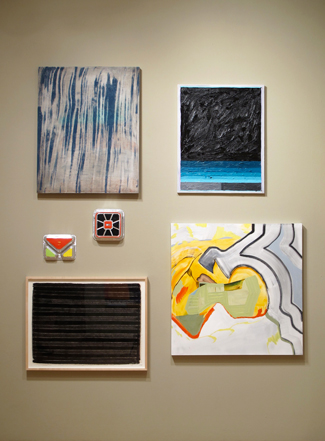
I've written elsewhere several times over in this blog about my motivations to commit to painting with affirmation. In capsule: my grad school accomplished its mission to deliver the reigning worldview of art and what passed as philosophical theory. The sharpest aspect was "the death of painting", the wellsprings of this came from various sources (Critical Theory was the dominant fashion of that moment, the end of the 80's), all of which can be grouped under the postmodern umbrella.
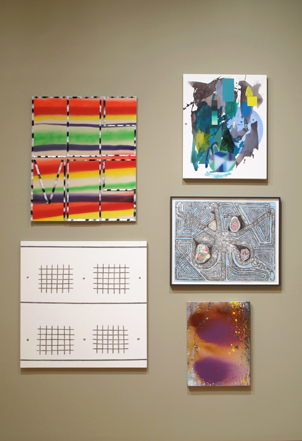
I believe that postmodernism ended with the fall of the Berlin Wall in 1989. When the Cold War ended, so did the internal logic of the bipolar 20th century. I had expected to see articles in various art publications as they arrived each month that reassessed the end of an epoch, the anticipation of the dawn of a new one. But none arrived even as students quietly devoted themselves to painting in the 90's, in grad school studios all over the world, en masse. It was curious to me at the time that my attempts to bring up the subject of the end of postmodernism with my colleagues fell flat. The mere mention of the word itself at the time was avoided, frowned upon, considered naive. I concluded that to do so required questioning the authority of those who coined the phrase "Question Authority", that the reign of king Critical Theory was still considered too strong to counter. If you raise your hand to strike the king, as the saying goes, you must destroy him. Evidently, the king was still too strong, artists such as Paul McCarthy and Mike Kelly were in the midst of their rise and their recognition was in sight at the horizon. Therefore I concluded that my fellow young painters simply bypassed the stalemate. Crafty.
What was the hazard in dismissing the significance of the sunset of the postmodern empire? I believe that we are only beginning to register the cost of averting our eyes. You see it in Walter Robinson's coinage of the label Zombie Formalism. Robinson hangs a big part of the blame on Clement Greenberg's lingering influence, the "...straightforward, reductive, essentialist method of making a painting..." whose legacy was the emphasis on visuality over the material substance of painting. Greenberg ushered in the high modernism of abstract expressionism but he also presaged dematerialized, conceptual postmodernism. Jerry Saltz suggested in Why Does So Much NewAbstraction Look The Same? that young artists have lost faith in their ability to write subsequent chapters of art history. The New is simply no longer possible for them, originality is still too radioactive, and so they become "... industrious junior postmodernist worker bees, trying to crawl into the body of and imitate the good old days of abstraction, deploying visual signals of Suprematism, color-field painting, minimalism, post-minimalism, Italian Arte Povera, Japanese Mono-ha, process art, modified action painting, all gesturing toward guys like Polke, Richter, Warhol, Wool, Prince, Kippenberger, Albert Oehlen, Wade Guyton, Rudolf Stingel, Sergej Jensen, and Michael Krebber." Robinson threw down the simulacrum card:"In our Postmodernist age, 'real' originality can be found only in the past, so we have today only its echo. Still, the idea of the unique remains a premiere virtue. Thus, Zombie Formalism gives us a series of artificial milestones, such as the first-ever painting made with the electroplating process (Kassay), and the first-ever painting done using paint applied in a fire extinguisher (Smith)." This indictment has been viral, seen in many other fronts of culture recently, even as we yet ignore the idiot light blinking so persistently on the dashboard. My favorite recent broadside is from Die Antwoord's Ninja's critical scream in Fatty Boom Boom:
Rappers r fucking boring ninja bashing dere brainz(Emphasis Mine.)
What happened 2 all da kool rapperz from back in da day?
Nowawayz all deze rapperz sound exactly da same
It's like 1 big inbred fuck-fest sis!...
This, is the hazard we risk.
Attempts to define both the modern and postmodern have always been difficult. It's hard to get a fix on ones bearings in the midst of the storm, but we are obliged to try. In the largest sense, to be modern is to reconcile the things one makes with the life one lives. The high modern was the era of the New York School of Abstract Expressionists, they tried to touch G-d through material means. The proto-postmodernists (Warhol, Johns, Rauchenburg, etc) couldn't touch G-d any better than Rothko and Pollock did. So they revolted in the most classic sense, they inverted the paradigm. Instead of touching G-d via materiality, they pointed at everyday life via conceptual means. They began in the most direct means with Pop, then dialed materiality down with Minimalism. Sol LeWitt was the fruit of the postmodern tree, turning the knob to zero. He established the sin aqua non of art-as-a-set-of-instructions. The storm of postmodernism was at its peak at this moment and it continued on with a spreading delta of ancillary movements: the personal-is-political, Critical Theory, and after a short interregnum in the early 90's with what I call CEO Art (artists --Hirst, Murakami, Pardo, Koons among others-- who model themselves as deal making chief executive officers, ref= Donald Trump's "Art of the Deal"). This last movement is yet another iteration of dematerialized art.
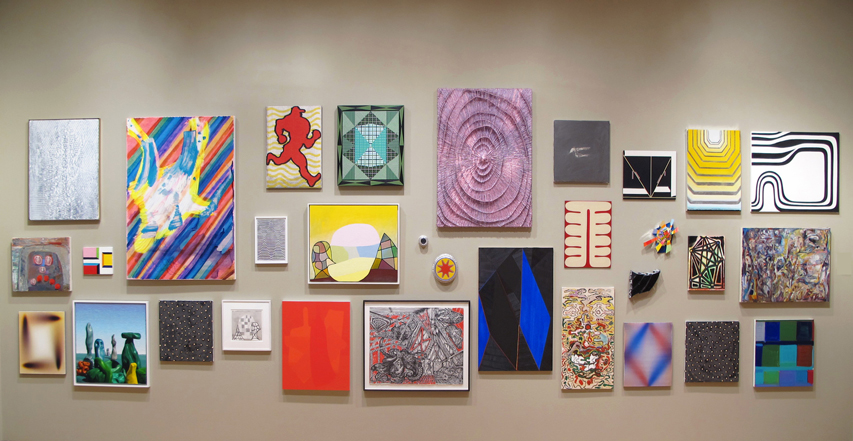
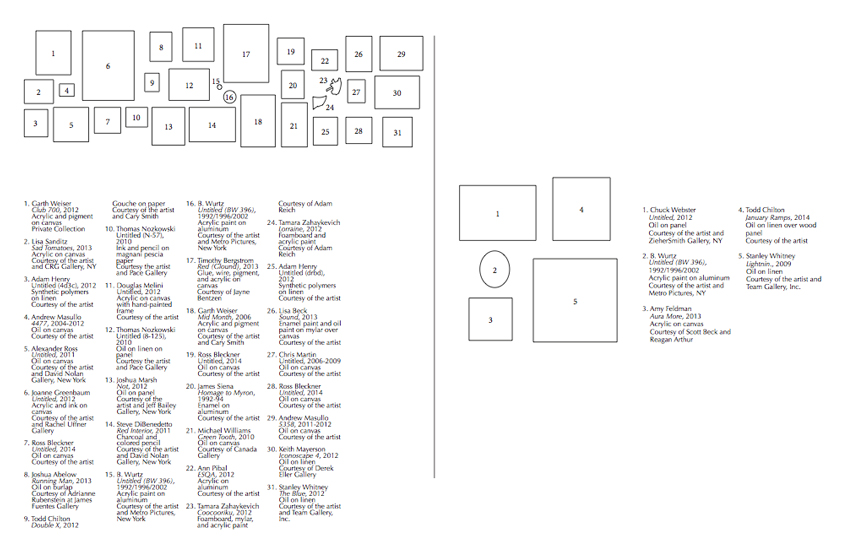
In the narrow sense of art movements, modernism and postmodernism were born as one from the ashes of the classical epoch. Modernism was first to blaze into prominence in an enchanted fit of idealism, finally babbling insipidly in tongues. Postmodernism succeeded with an empirical, skeptical refutation of modernism, it's' other, finally weaponizing irony in a gleam of nihilism. As in the opening lines of the Iliad, anger was its muse... and to complete the mirrored model, modernism was the delayed journey home. Negation motivates, saturates the postmodern. Painting had to die so that alt-media could live.
But that was then and this is now.
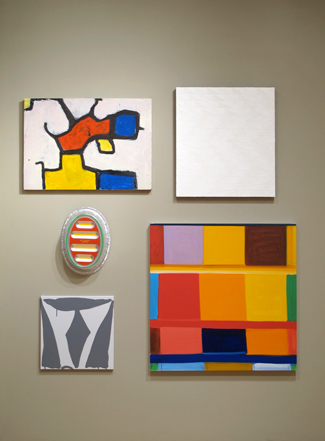
And so the question persists: how can an artist revolt against all of this? How can we revolt against revolution without resorting to the reactionary? I won't be so rash as to try to supply an answer to this ultimate question, but I know two things: 1) that a good place to start is to defy what is verboten (which for me and a legion of other artists is to approach painting in the affirmative) and 2) that any sensible response will be a synthesis, to preserve the gains won by both epochs modern and postmodern (for example, to embrace what was discovered by the anti-aesthetic and abjection in terms of painting). However the art of the early 21st century will be defined, it should profit from what was achieved in the 20th. The way forward might be to reject rejection, to heal the split, to combine the best of both modernism and postmodernism, to explore how they fit together.
Quality of invention, both in the overall image and well as the handling of materials. Every part meaningful. Originality, which conveys a sense of awareness of contemporary art, and art of the past, but most of all of the artist's own evolving path. Getting it "right" for whatever it is. Anything goes. Generosity of spirit, and positive character, like that which exists in those we most enjoy spending our time with. Freshness and a heightened sense of "believability". Realness doesn't have to look like something we know or understand. When we see it, we can feel it. Sometimes things we don't appreciate at first can stick with us, and take us forward. All art is essentially abstract at its core....
At first, I had mistaken the tribute to Jennifer Wynne Reeves to be indicated in the curation by the reference in the title of the "Pincushion", my associations ran to images of needles and IV's and the tribulations of hospice care. Cary corrected me, as he later wrote: "'Pincushion' was not about needles in the hospital, but like minded-ness... points of intensity all entering from different locations, but pointing in relatively the same direction. Just my perspective. And I wanted a conundrum in the title..." In addition to the image of all 40 artists entering the closed system of painting from different surface locations of painting's spherical pincushion, the idea of painting is also a compound one. If optimism is a force that is outward bound, centrifugal, then pessimism might be a force that is inward bound, centripetal.
This is a good instinct, to complicate the curatorial idea of affirmation, as I believe that the way forward has to be a synthesis (modern and postmodern) after all.
July 1, 2014
OuPeinPo
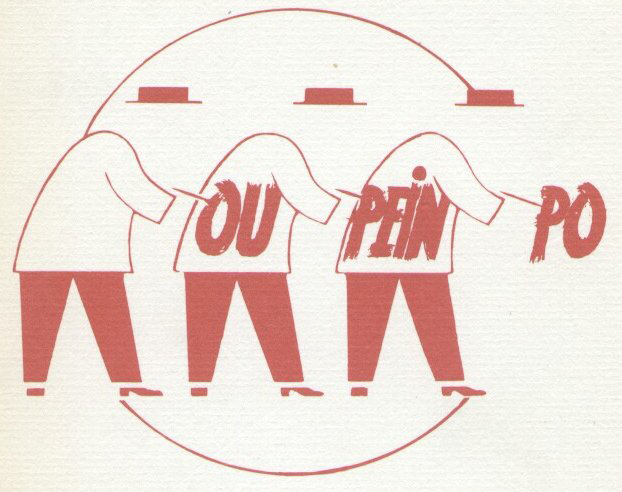
(Image Source.)
Flipping the pages of Anthony Julius' Transgressions, the Offences of Art, 2002, I became arrested by these paragraphs on page106:
Supposing these two, the innovative and the interrogative, to be ideal types, one could say that while innovators redraw boundaries, interrogators disturb them. Innovators are explorers, interrogators are ironists. Innovators enlarge, interrogators subvert. But such oppositions are purely analytical. Few works are wholly innovative, none is merely interrogative.Cubist works, for example, have both innovative and interrogative aspects. They extend art's boundaries; they provoke questions about the nature of art....(Emphasis Mine)These transgressions, the innovative and the interrogative in combination, often entail, in the artist's understanding, a trumping of one rule with a notionally higher rule or 'law', thereby justifying the disregard for the rule by reference to its inferiority to the other rule or law. (This is not to be confused either with the adoption, in a ruthless art world, of self imposed constraints as the conditions of art-making, or with the explorations, within the individual artwork, of its own internal laws. The artists of the Oupeinpo movement are the best example of the former. Works of concrete art are exemplary of the latter, because, as the artist Max Bill defines them, they establish patterns which, 'having their own causality, are tantamount to laws').
The bolded sentences above jumped out at me. I came out of grad school in the beginning of the 90's embracing an art form that was long declared dead. I wanted to "bring it to life", I sought to amplify the qualities natural and specific to painting: corporeality, embodiment, mortality, flesh, a fat impasto paint,I looked for alternative tools that delivered paint to canvas (focusing first on what I wanted to manifest and secondly the nature of the tool that might deliver this... as opposed to reconciling myself to what a store-bought-tool might be capable of prior to its use). I embraced the limit and change of time and state from wet to dry, the mixture to mud from refined colors... I looked for constraints that were natural and specific to paint and painting. The idea of "breaking boundaries" had become hoary, exhausted and limited with soured irony. The art world at that time was reflexively seeking limitlessness, heedless of any possible negative consequences. Painting was and is limit incarnate. If painting was dead, it needed to die because conceptuality had to live... which was fine and even necessary, but Sol LeWitt had already manifested the postmodern program in its' purest state: art as a list of instruction. All art that followed his wake risked labored elaboration. The program of postmodernity required stepped dematerialization until the point when painting evaporated into visuality, first with astonishment then eventually ad absurdum. I revolted on all this with the turn of my heel, while at the same time wanting to incorporate the accumulated wisdom and lessons learned.
SO I was delighted to discover after lo, so many years, an art movement whose concerns paralleled mine, in a roughly parallel time frame. I'm still figuring them out. What follows is a compendium of Google excavations:
The workshop of potential painting (Oupeinpo) was created in 1980. It provides a space to work, not in the ends of completing works, but rather to make tools and, more precisely, methods, perspectives, manipulations... structures, or Oupeinpian constraints, that could become "tools for tools" within the artist's field. Thus understood, constraint is not a restriction but the necessary condition of a potential field: predetermining the number of colors allowed, for example, opens the potential field of color-measured works, just as the pencil stretches graphite works to an unlimited register.The Oupeinpo has discerned two practical families of constraint: means-based rules, or procedural constraints, and ends-based rules, or formal constraints. Accordingly, procedural constraints apply to the manipulation of prepared knives and brushes, and formal constraint apply to the final appearance, regardless of the means used, of a painting, for example, with four separate scenes, each obtained by a 90° rotation (see Jacques Carelman's "La Rose des têtes").
In order to prove and validate its constraints, the Oupeinpo elaborates non-works. It fashions nothing other than possible perspectives needed for demonstrations, which it considers feasibility experiments. Whether or not the group's members--all working artists--actually manage to reap the benefits in their own work, Oupienpian experimentation shares the same operative distance one might find between the conditions in the 1960 laboratories where lasers were developed and today's networks of optical fibers: it's the same distance that definitively separates the registers of inquiry and that of knowledge.
By vocation, the Oupeinpo does not limit itself to the contents ofpein (painting). Its domain is that of formal structures in which the registers of both questioning and uncertainty, like a subversive formalism, remain actively formative. Like Albert Einstein, we conceive of imaginary experiments in order to push the boundaries of the equations (of constraints) to their limits, to their breaking point.
Torturing the limits, pushing the boundaries by way of Oupeinpian constraint, not in hopes of locating some chimeric escape, but rather to apprehend and motivate phenomenal wrinkles, empty spaces, to infuse outgrowths, to inspire excursions into new frontiers, and to play, to whistle tricky tunes in which supplementary dimensions of this universe may interfere.
Seizing control of these infinite additional dimensions, the Oupeinpo thereby opens the gates of epiphany to new subjects.
Oupeinpo, contraction oforto vroir of peinturePotentielle, was created in within Or-X-Po in order to invent forms, constraints mathematical, logical or ludic able to support the work of the painters and more generally of the visual artists.
(Click the link to see the chronology from1980 to 2005 and a bibliography)
I'm happy to see the repeated references to Pataphysics, by the way.
The OULIPO
The Origin of the movementThe OULIPO was created in 1960 by Raymond Queneau and François le Lionnais as an attempt to explore methodically the possibilities of literature and, in general, of language.
OULIPO stands for "OUvroir de LIttérature POtentielle " (Workshop for Potential Literature). OU, the workshop, produces LI, but what kinf of LI ? LIPO, potential literature, one under constraints, both new and old, exercises in style, some difficult, some less so, aiming at assembling and reassembling letters and words according to certain forms and patterns, like the recomposed images of a kaleidoscope.
An Oulipian author is "a rat building up the labyrinth it wants to go out of". Labyrinth of what? Of sounds, sentences, paragraphs, chapters, books, libraries, prose, poetry and all at the same time...This vast project firstly gathered writers, mathematicians, poets and logicians (Calvino, Pérec, Marcel Duchamp and many more...) and was used as a way to create new forms of literature.
For example, we could name "A Void" (1969) in which Georges Pérec endeavours to write a novel without using the vowel "e" or "Exercises in style" which tells the same story over again by using a whole range of different narrative forms.
"Oulipo is the opposite of chance"
Claude Berge."Oulipo is not a school, it is a crèche where, hidden from parents and supervisors, we play at trying to squeeze cylinders into square holes and cubes into round ones. And it works. Some days."
François Caradec.Fortified by its success and originality, Oulipo begot a series of OU-x-PO such as:
L'OUPEINPO:
Ouvroir de Peinture Potentielle, Workshop for Potential Painting.
L'OULIPOPO:
Ouvroir de Littérature Policière Potentielle, Workshop for Potential Crime Literature.
L'OUTRAPO:
Ouvroir de Tragi-Comédies Potentielles, Workshop for Potential Tragicomedies.
L'OUCA(TA)PO:
Ouvroir de Catastrophes Potentielles, Workshop for Potential Catastrophes./td>
L'OUPHOPO:
Ouvroir de Photographies Potentielles, Workshop for Potential Photography.
L'OUBAPO:
Ouvroir de Bandes Dessinées Potentielles, Workshop for Potential Comics.
L'OUMUPO:
Ouvroir de Musiques Potentielles, Workshop for Potential Musics.
All these Ou-x-PO varying in degrees of seriousness and development.
We could also refer to the Dogma cinema, which was greatly inspired by this principle of creation under constraints. The Dogma was created in 1995 by two Danish directors, Lars Von Trier and Thomas Vinterberg. Its manifesto establishes a set of rules running counter to the standardised format of American cinema by putting great enphasis on chance, improvisation and a minimal amount of equipment (e.g. "The Idiots" by Lars Von Trier or "Festen" by Thomas Vinterberg.)
THE DOGMA MANIFESTO - THE VOW OF CHASTITY
"I swear to submit to the following set of rules drawn up and confirmed by Dogme 95:
1. Shooting must be done on location. Props and sets must not be brought in ( if a particular prop is necessary for the story, a location must be chosen where this prop is to be found).
2. The sound must never be produced apart from the images or vice versa. (Music must not be used unless it occurs where the scene is being shot).
3. The camera must be hand-held. Any movement or immobility attainable in the hand is permitted. (The film must not take place where the camera is standing; shooting must take place where the film takes place).
4. The film must be in colour. Special lighting is not acceptable. (If there is too little light for exposure the scene must be cut or a single lamp be attached to the camera).
5. Optical work and filters are forbidden.
6. The film must not contain superficial action. (Murders, weapons, etc. must not occur.)
7. Temporal and geographical alienation are forbidden. ( That is to say that the film takes place here and now.)
8. Genre movies are not acceptable.
9. The film format must be Academy 35 mm.
10. The director must not be credited.Furthermore I swear as a director to refrain from personal taste ! I am no longer an artist. I swear to refrain from creating a "work", as I regard the instant as more important than the whole. My supreme goal is to force the truth out of my characters and settings. I swear to do so by all the means available and at the cost of any good taste and any aesthetic considerations.
Thus I make my VOW OF CHASTITY."Copenhagen, Monday 13 March 1995.
You could easily draw a parallel between these "Exercises in Style" and the world of hip hop music where rivalry is the rule, where what matters is to find the right scratch, to have a good flow or to be the best MC... It is this principle of challenge, deriving from this notion of artistic creation under constraint, that Ici d'ailleurs... offers you with its OUMUPO.
Ouxpo is an acronym for "Ouvroir d'X Potentielle". It is an umbrella group for Oulipo, Oubapo, Outrapo, etc. The term 'ouvroir', originally used in conjunction with works of charity, was reused by Raymond Queneau for a blend of 'ouvroir' and 'œuvre' ("work") and roughly corresponds to the English 'workshop'. The term 'potentiel' is used in the sense of that "which is possible, or realisable if one follows certain rules".History
Created within the Collège de 'Pataphysique in 1960, Oulipo is now better known than the college itself and has survived the decline of the college.
In accordance with the wishes of François Le Lionnais and Raymond Queneau, other Ouvroirs d'X Potentielle have been spun off from Oulipo for all the arts. Each ouvroir is dedicated to some field 'X'. It analyses the pre-existing constraints, and investigates new forms of potential creations within the field. The job of coordinating the ouvroirs was given first to François Le Lionnais, then Noël Arnaud, and then Milie von Bariter.
The Official Ouvroirs
After 1960-11-24 when Oulipo was created, thirteen years passed before the appearance of Oulipopo (LIttérature POlicière, detective literature) in 1973, twenty years before Oupeinpo (PEINture, painting) in 1980, and 31 years before Outrapo(TRAgicomédie) in 1991, the first ouvroir to be created without François Le Lionnais. Since then, a new ouvroir has arisen almost every year.
A list of some Ouxpo groups:
*Oubapo, (BAnde dessinée, or comics)
* Ouhispo, (HIStory)
* Oumapo, (MArionnettes)
* Ouphopo, (PHOtography)
* Oulipo, (LIttérature)
* Oulipolipo, (LIbyco POlonais de LIttérature)
* Ou'inpo, (INformatique, or information technology)
* Ouca(ta)po, (CATAstrophe)
* Oupypo, ('PYgology')
* Ouarchpo, (ARCHitecture)
* Oupolpot, (POLitics)
* Ougrapo, (design GRAphique)Oumupo and Oucipo (MUsic and CInematography) were created very early, but the dates are uncertain and these ouvroirs probably experienced multiple births. In fact, many Oumupo seem to co-exist. Oucuipo (CUIsine) was created from a fringe activity of Oulipo.
Some Others
Ougrapo (GRAmmar) wants to remain independent of Ouxpo. Some lists mention both an Oumathpo and an Oupornpo. Others, some probably parodies of ouvroirs, include Outyppo (TYPography), Oupopo (POlitics, again), Oumapo (MAthematics, again), Oulitramupo (LIttérature TRAduite en MUsique), Oupipo (PIètrerie, from piètre 'mediocre'), Oulipo (but pronounced oulīpo, as in LIposuction) -- but these do not appear to be either authentic or members of Ou-X-Po.
There exists also an Oucopo (COmedy), an Ougéopo (GEOgraphy), an Oujapo (JArdinage or gardening), and an Ououpo (OUxpo (meta-oulipo)).
The notion of an Ouflarfpo (FLARF) has also recently been theorized as a means of resolving some of the aesthetic and political tensions between Flarf and Conceptual Poetry.
Doug Henders
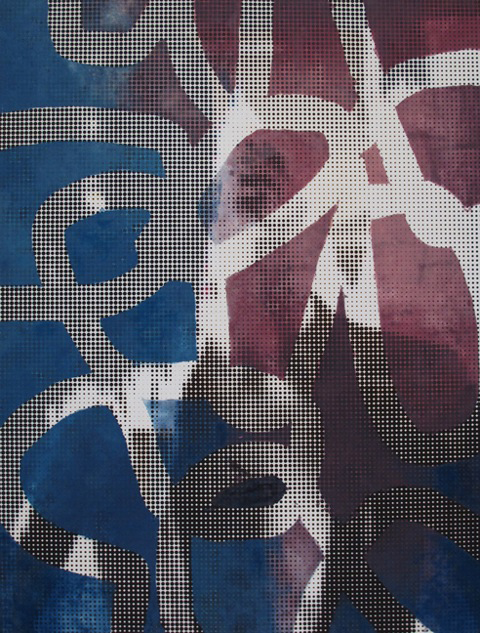
Doug Henders
"Helmet Cam"
2014
40"x30"
Oil paint + pigmented ink on canvas
Who did I Hat Tip back in the Die Antwoord post? That'd be Doug Henders. An old friend, he's one of the few artists that I know who also spent time in the service after high school, he was stationed in Germany, the traces of which I think can be seen in his paintings. He also worked for Prince, the traces too, I think are legible. He opened up the Ninja/Yo-Landi wormhole for me last week (Andrew Hahn cracked the door open as well last year with an Evil Boy link. PS: Die Antwoord's tour comes to NYC & LA this September.) I'm still in free fall. Here's a nearly impromptu performance via Taxijam...
